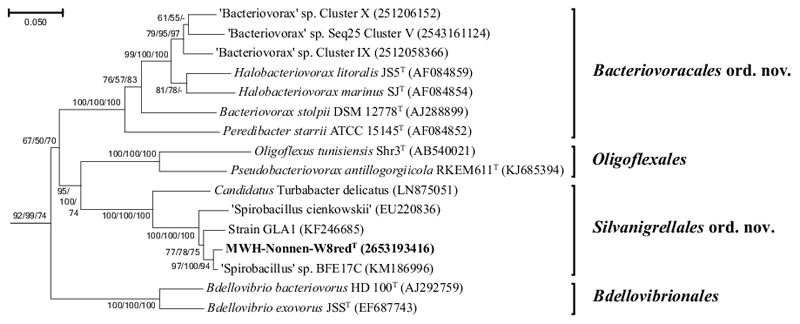Fig. 4.
Revised taxonomy of the class Oligoflexia. The shown Neighbour-Joining tree was calculated with almost complete 16S rRNA sequences of bacteria proposed to be classified in the previously monotypic class Oligoflexia. Alignment positions with gaps in any sequence were completely omitted for the tree calculation, which resulted in an alignment length of 1343 positions. Phylogenetic distances were calculated by using the Tamura 3-parameter substitution model. Sequences of taxa not affiliated with the phylum Proteobacteria were used as outgroup (not shown). Bootstrap values obtained with the neighbour joining, the maximum likelihood and the maximum parsimony methods (1000, 100, 100 replications, respectively) are indicated. Note that this 16S rRNA tree differs regarding the position of the revised Bdellovibrionales from the calculated multi-protein trees (Fig. 4 and Suppl. Mat. Fig. S3), however the responsible node is only weakly supported in the 16S rRNA tree. The branching order of the calculated NJ and ML tree is identical.

